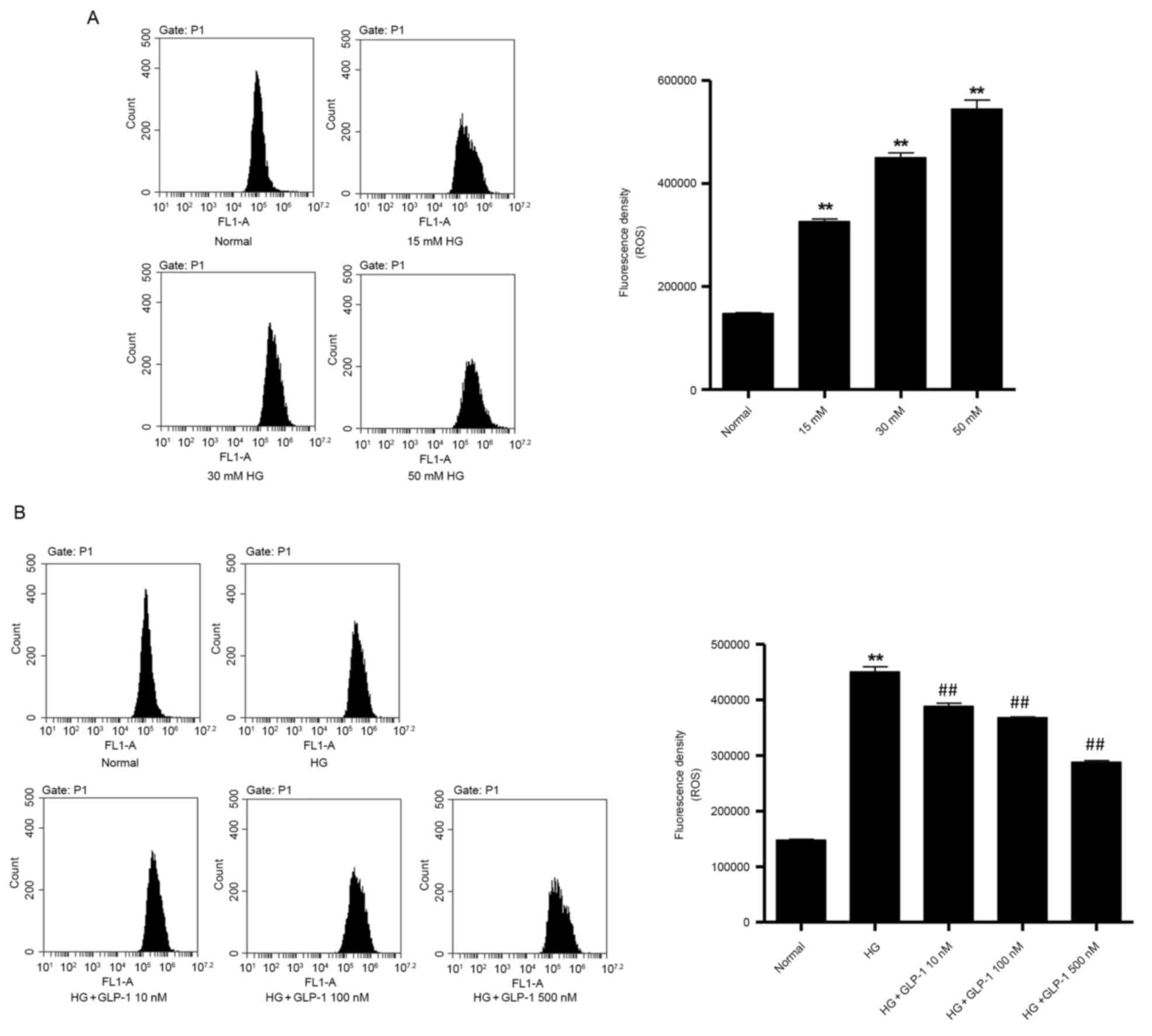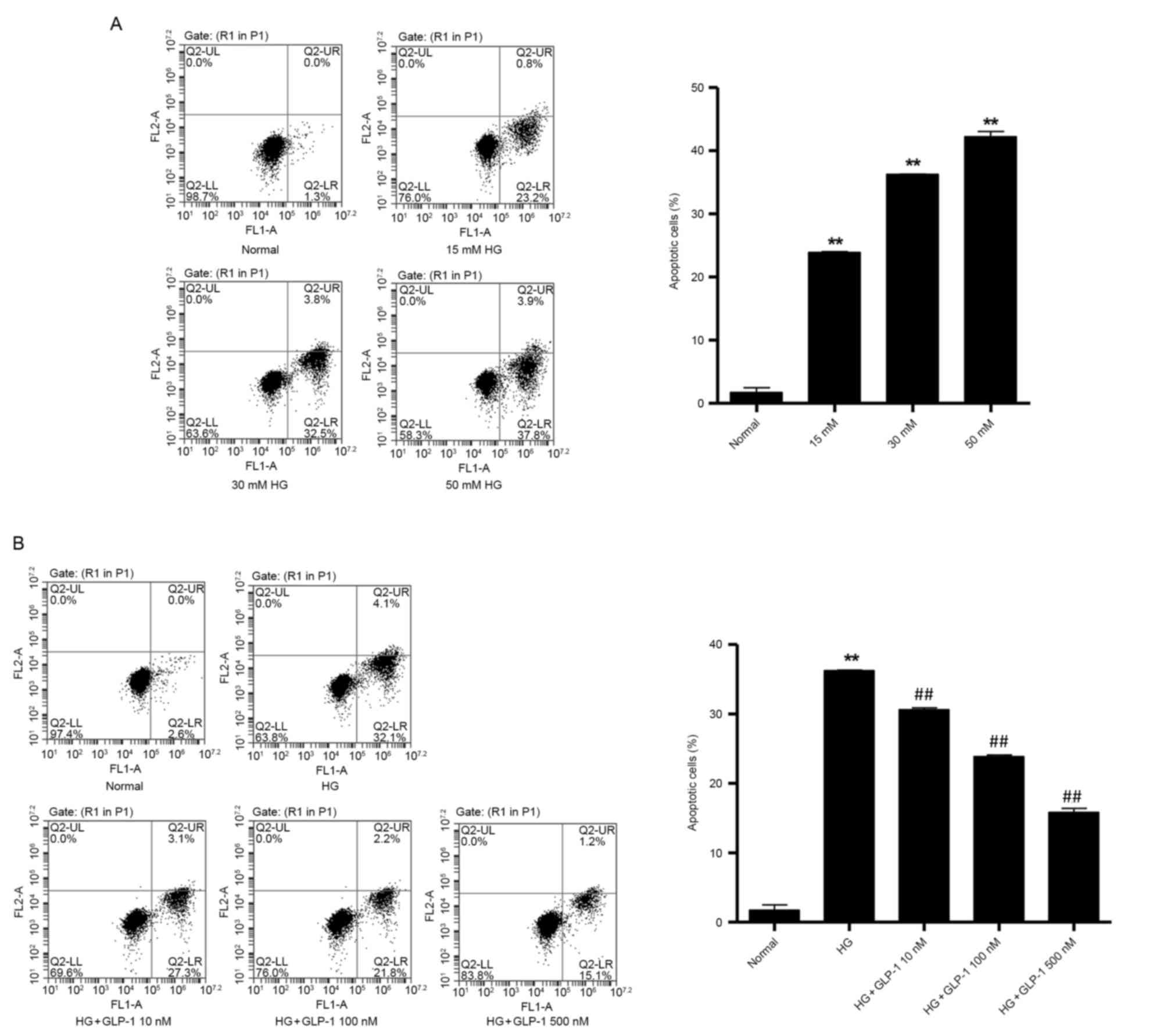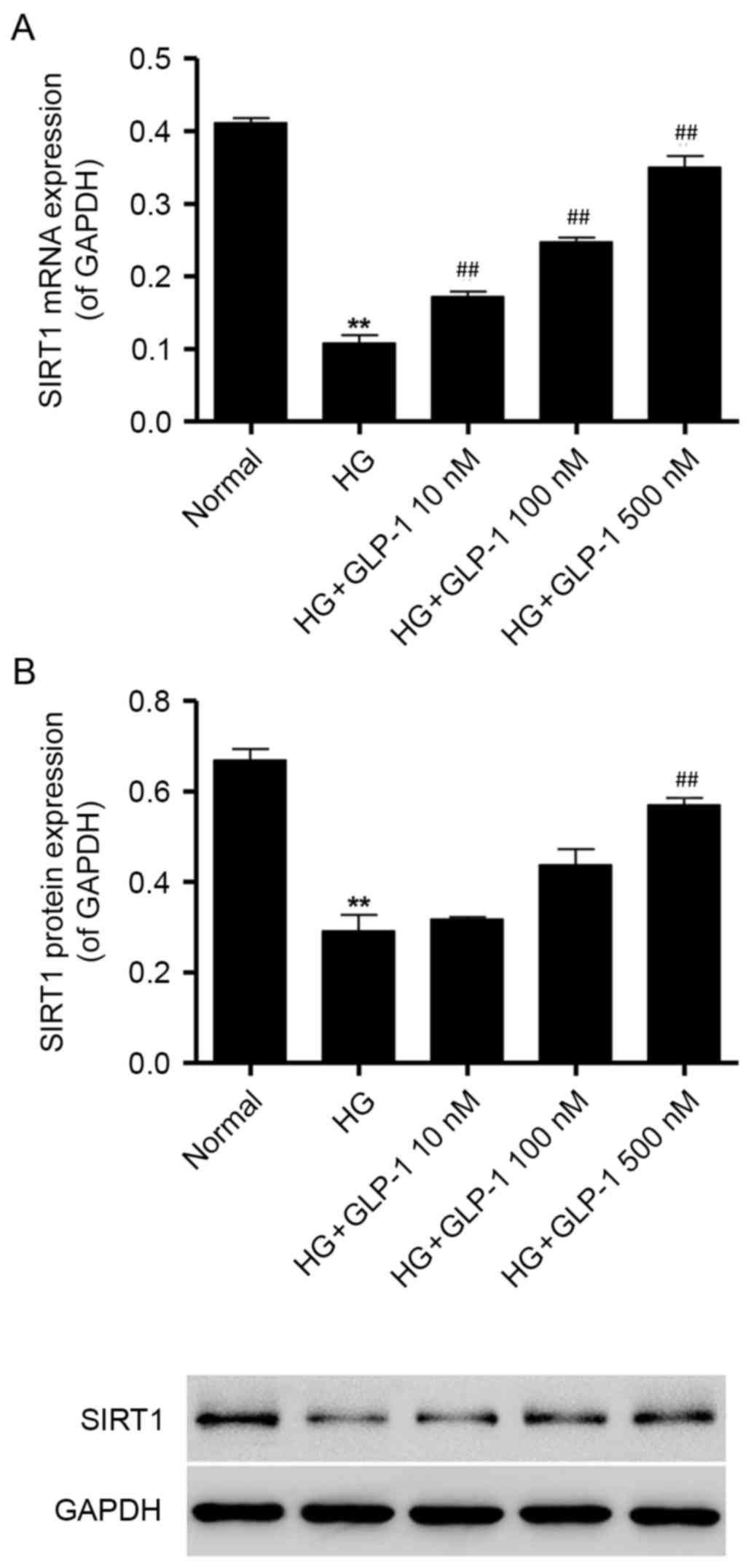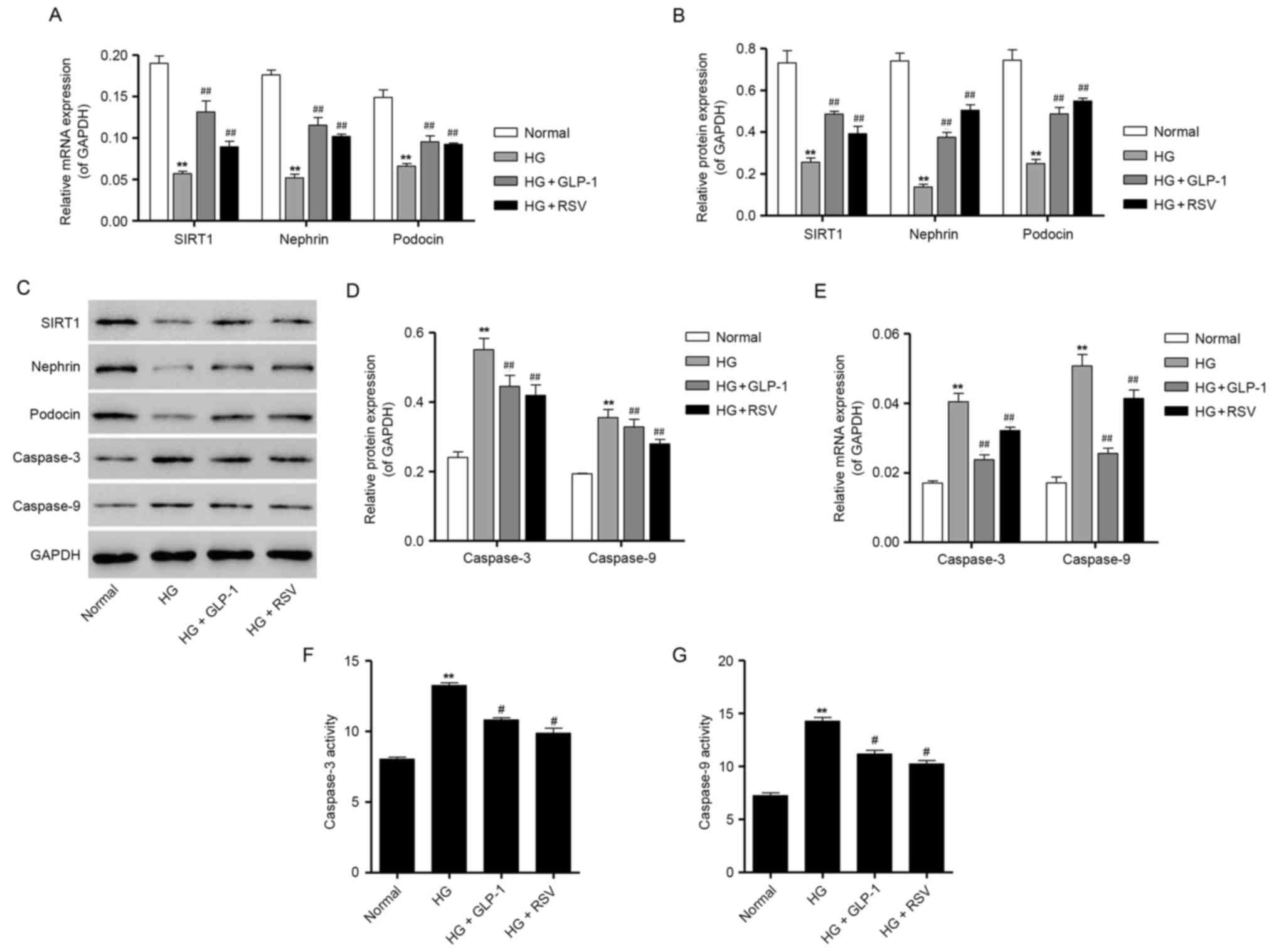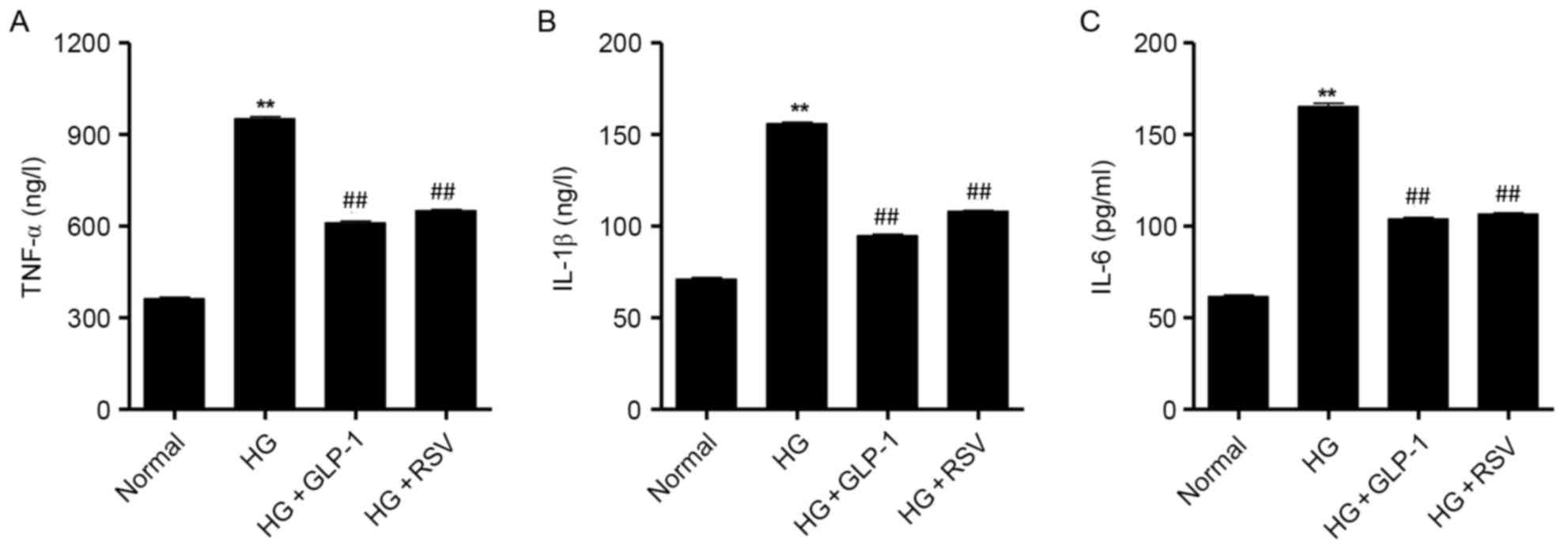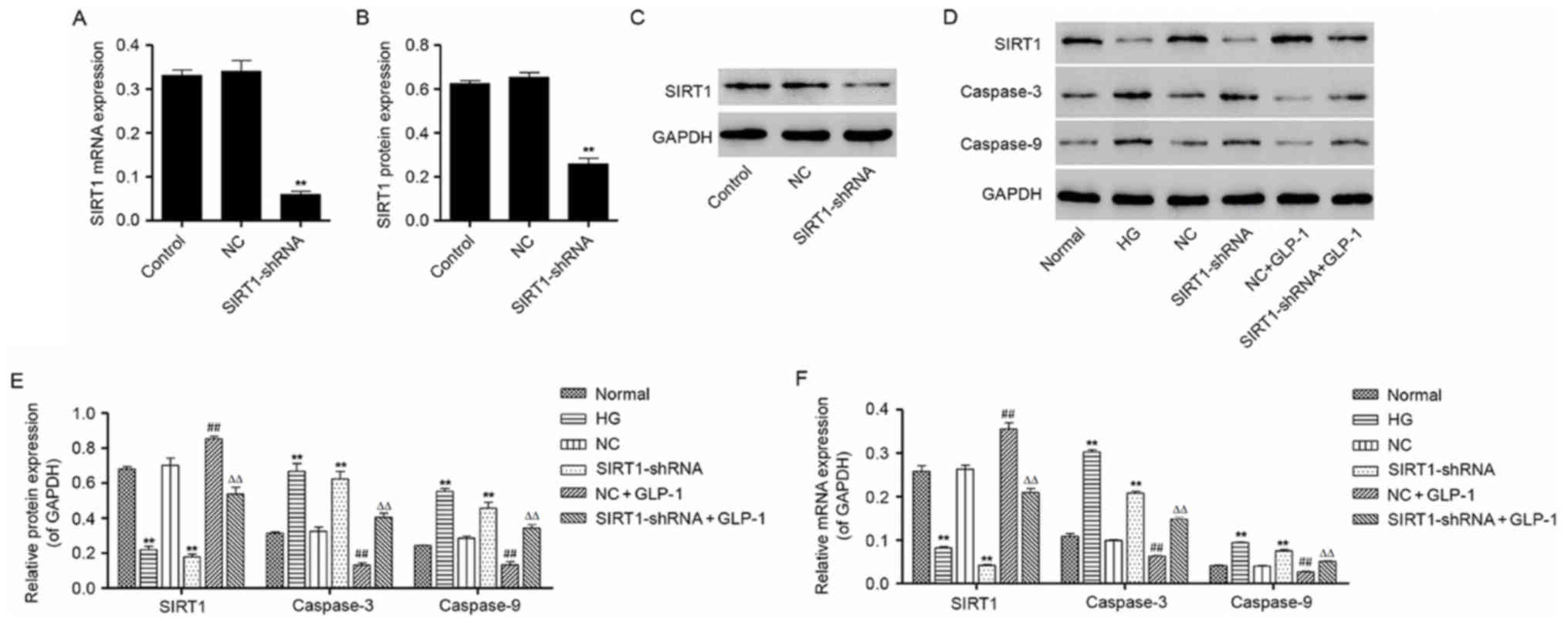|
1
|
Marques C, Mega C, Goncalves A,
Rodrigues-Santos P, Teixeira-Lemos E, Teixeira F, Fontes-Ribeiro C,
Reis F and Fernandes R: Sitagliptin prevents inflammation and
apoptotic cell death in the kidney of type 2 diabetic animals.
Mediators Inflamm. 2014:5387372014. View Article : Google Scholar : PubMed/NCBI
|
|
2
|
Panduru NM, Saraheimo M, Forsblom C, Thorn
LM, Gordin D, Wadén J, Tolonen N, Bierhaus A, Humpert PM and Groop
PH: FinnDiane Study Group: Urinary adiponectin is an independent
predictor of progression to end-stage renal disease in patients
with type 1 diabetes and diabetic nephropathy. Diabetes Care.
38:883–890. 2015. View Article : Google Scholar : PubMed/NCBI
|
|
3
|
Wu Y, Dong J, Yuan L, Liang C, Ren K,
Zhang W, Fang F and Shen J: Nephrin and podocin loss is prevented
by mycophenolate mofetil in early experimental diabetic
nephropathy. Cytokine. 44:85–91. 2008. View Article : Google Scholar : PubMed/NCBI
|
|
4
|
Jim B, Ghanta M, Qipo A, Fan Y, Chuang PY,
Cohen HW, Abadi M, Thomas DB and He JC: Dysregulated nephrin in
diabetic nephropathy of type 2 diabetes: A cross sectional study.
PLoS One. 7:e360412012. View Article : Google Scholar : PubMed/NCBI
|
|
5
|
Liu BC, Song X, Lu XY, Li DT, Eaton DC,
Shen BZ, Li XQ and Ma HP: High glucose induces podocyte apoptosis
by stimulating TRPC6 via elevation of reactive oxygen species.
Biochim Biophys Acta. 1833:1434–1442. 2013. View Article : Google Scholar : PubMed/NCBI
|
|
6
|
Shah A, Xia L, Goldberg H, Lee KW, Quaggin
SE and Fantus IG: Thioredoxin-interacting protein mediates high
glucose-induced reactive oxygen species generation by mitochondria
and the NADPH oxidase, Nox4, in mesangial cells. J Biol Chem.
288:6835–6848. 2013. View Article : Google Scholar : PubMed/NCBI
|
|
7
|
Brezniceanu ML, Liu F, Wei CC, Chénier I,
Godin N, Zhang SL, Filep JG, Ingelfinger JR and Chan JS:
Attenuation of interstitial fibrosis and tubular apoptosis in db/db
transgenic mice overexpressing catalase in renal proximal tubular
cells. Diabetes. 57:451–459. 2008. View Article : Google Scholar : PubMed/NCBI
|
|
8
|
Purwata TE: High TNF-alpha plasma levels
and macrophages iNOS and TNF-alpha expression as risk factors for
painful diabetic neuropathy. J Pain Res. 4:169–175. 2011.
View Article : Google Scholar : PubMed/NCBI
|
|
9
|
Xu L, Shen P, Bi Y, Chen J, Xiao Z, Zhang
X and Wang Z: Danshen injection ameliorates STZ-induced diabetic
nephropathy in association with suppression of oxidative stress,
pro-inflammatory factors and fibrosis. Int Immunopharmacol.
38:385–394. 2016. View Article : Google Scholar : PubMed/NCBI
|
|
10
|
Bălăşescu E, Cioplea M, Brinzea A, Nedelcu
R, Zurac S and Ion DA: Immunohistochemical aspects of cell death in
diabetic nephropathy. Rom J Intern Med. 54:54–62. 2016.PubMed/NCBI
|
|
11
|
Drucker DJ: The biology of incretin
hormones. Cell Metab. 3:153–165. 2006. View Article : Google Scholar : PubMed/NCBI
|
|
12
|
Gupta A, Jelinek HF and Al-Aubaidy H:
Glucagon like peptide-1 and its receptor agonists: Their roles in
management of Type 2 diabetes mellitus. Diabetes Metab Syndr.
11:225–230. 2017. View Article : Google Scholar : PubMed/NCBI
|
|
13
|
Shen M, Sun D, Li W, Liu B, Wang S, Zhang
Z and Cao F: The synergistic effect of valsartan and LAF237
((S)-1-((3-hydroxy-1-adamantyl)ammo)acetyl-2-cyanopyrrolidine) on
vascular oxidative stress and inflammation in type 2 diabetic mice.
Exp Diabetes Res. 2012:1461942012. View Article : Google Scholar : PubMed/NCBI
|
|
14
|
Ishibashi Y, Nishino Y, Matsui T, Takeuchi
M and Yamagishi S: Glucagon-like peptide-1 suppresses advanced
glycation end product-induced monocyte chemoattractant protein-1
expression in mesangial cells by reducing advanced glycation end
product receptor level. Metabolism. 60:1271–1277. 2011. View Article : Google Scholar : PubMed/NCBI
|
|
15
|
Wang D, Luo P, Wang Y, Li W, Wang C, Sun
D, Zhang R, Su T, Ma X, Zeng C, et al: Glucagon-like peptide-1
protects against cardiac microvascular injury in diabetes via a
cAMP/PKA/Rho-dependent mechanism. Diabetes. 62:1697–1708. 2013.
View Article : Google Scholar : PubMed/NCBI
|
|
16
|
Kodera R, Shikata K, Kataoka HU, Takatsuka
T, Miyamoto S, Sasaki M, Kajitani N, Nishishita S, Sarai K, Hirota
D, et al: Glucagon-like peptide-1 receptor agonist ameliorates
renal injury through its anti-inflammatory action without lowering
blood glucose level in a rat model of type 1 diabetes.
Diabetologia. 54:965–978. 2011. View Article : Google Scholar : PubMed/NCBI
|
|
17
|
Park CW, Kim HW, Ko SH, Lim JH, Ryu GR,
Chung HW, Han SW, Shin SJ, Bang BK, Breyer MD and Chang YS:
Long-term treatment of glucagon-like peptide-1 analog exendin-4
ameliorates diabetic nephropathy through improving metabolic
anomalies in db/db mice. J Am Soc Nephrol. 18:1227–1238. 2007.
View Article : Google Scholar : PubMed/NCBI
|
|
18
|
Kitada M, Kume S, Takeda-Watanabe A,
Kanasaki K and Koya D: Sirtuins and renal diseases: Relationship
with aging and diabetic nephropathy. Clinical sci (Lond).
124:153–164. 2013. View Article : Google Scholar
|
|
19
|
Chalkiadaki A and Guarente L: Sirtuins
mediate mammalian metabolic responses to nutrient availability. Nat
Rev Endocrinol. 8:287–296. 2012. View Article : Google Scholar : PubMed/NCBI
|
|
20
|
He W, Wang Y, Zhang MZ, You L, Davis LS,
Fan H, Yang HC, Fogo AB, Zent R, Harris RC, et al: Sirt1 activation
protects the mouse renal medulla from oxidative injury. J Clin
Invest. 120:1056–1068. 2010. View
Article : Google Scholar : PubMed/NCBI
|
|
21
|
Kume S, Uzu T, Horiike K, Chin-Kanasaki M,
Isshiki K, Araki S, Sugimoto T, Haneda M, Kashiwagi A and Koya D:
Calorie restriction enhances cell adaptation to hypoxia through
Sirt1-dependent mitochondrial autophagy in mouse aged kidney. J
Clin Invest. 120:1043–1055. 2010. View
Article : Google Scholar : PubMed/NCBI
|
|
22
|
Kume S, Kitada M, Kanasaki K, Maegawa H
and Koya D: Anti-aging molecule, Sirt1: A novel therapeutic target
for diabetic nephropathy. Arch Pharm Res. 36:230–236. 2013.
View Article : Google Scholar : PubMed/NCBI
|
|
23
|
Shi JX, Wang QJ, Li H and Huang Q:
Silencing of USP22 suppresses high glucose-induced apoptosis, ROS
production and inflammation in podocytes. Mol Biosyst.
12:1445–1456. 2016. View Article : Google Scholar : PubMed/NCBI
|
|
24
|
Livak KJ and Schmittgen TD: Analysis of
relative gene expression data using real-time quantitative PCR and
the 2(-Delta Delta C(T)) method. Methods. 25:402–408. 2001.
View Article : Google Scholar : PubMed/NCBI
|
|
25
|
Nishikawa T, Brownlee M and Araki E:
Mitochondrial reactive oxygen species in the pathogenesis of early
diabetic nephropathy. J Diabetes Investig. 6:137–139. 2015.
View Article : Google Scholar : PubMed/NCBI
|
|
26
|
Yacoub R, Lee K and He JC: The Role of
SIRT1 in diabetic kidney disease. Front Endocrinol (Lausanne).
5:1662014.PubMed/NCBI
|
|
27
|
Susztak K, Raff AC, Schiffer M and
Bottinger EP: Glucose-induced reactive oxygen species cause
apoptosis of podocytes and podocyte depletion at the onset of
diabetic nephropathy. Diabetes. 55:225–233. 2006. View Article : Google Scholar : PubMed/NCBI
|
|
28
|
Saleem MA, Ni L, Witherden I, Tryggvason
K, Ruotsalainen V, Mundel P and Mathieson PW: Co-localization of
nephrin, podocin, and the actin cytoskeleton: Evidence for a role
in podocyte foot process formation. Am J Pathol. 161:1459–1466.
2002. View Article : Google Scholar : PubMed/NCBI
|
|
29
|
Bock F, Shahzad K, Wang H, Stoyanov S,
Wolter J, Dong W, Pelicci PG, Kashif M, Ranjan S, Schmidt S, et al:
Activated protein C ameliorates diabetic nephropathy by
epigenetically inhibiting the redox enzyme p66Shc. Proc Natl Acad
Sci USA. 110:648–653. 2013. View Article : Google Scholar : PubMed/NCBI
|
|
30
|
Allen DA, Harwood S, Varagunam M, Raftery
MJ and Yaqoob MM: High glucose-induced oxidative stress causes
apoptosis in proximal tubular epithelial cells and is mediated by
multiple caspases. FASEB J. 17:908–910. 2003. View Article : Google Scholar : PubMed/NCBI
|
|
31
|
Tews D, Lehr S, Hartwig S, Osmers A,
Paslack W and Eckel J: Anti-apoptotic action of exendin-4 in INS-1
beta cells: comparative protein pattern analysis of isolated
mitochondria. Horm Metab Res. 41:294–301. 2009. View Article : Google Scholar : PubMed/NCBI
|
|
32
|
Lim AK and Tesch GH: Inflammation in
diabetic nephropathy. Mediators Inflamm. 2012:1461542012.
View Article : Google Scholar : PubMed/NCBI
|
|
33
|
Guo C, Huang T, Chen A, Chen X, Wang L,
Shen F and Gu X: Glucagon-like peptide 1 improves insulin
resistance in vitro through anti-inflammation of macrophages. Braz
J Med Biol Res. 49:e58262016. View Article : Google Scholar : PubMed/NCBI
|
|
34
|
Kitada M, Kume S, Kanasaki K,
Takeda-Watanabe A and Koya D: Sirtuins as possible drug targets in
type 2 diabetes. Curr Drug Targets. 14:622–636. 2013. View Article : Google Scholar : PubMed/NCBI
|
|
35
|
Wang XL, Wu LY, Zhao L, Sun LN, Liu HY,
Liu G and Guan GJ: SIRT1 activator ameliorates the renal tubular
injury induced by hyperglycemia in vivo and in vitro via inhibiting
apoptosis. Biomed Pharmacother. 83:41–50. 2016. View Article : Google Scholar : PubMed/NCBI
|















